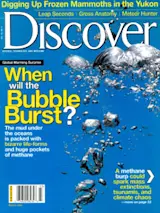If you’ve seen or used the E-ZPass automated tollbooth system employed in the Northeast, you’ve already caught a glimpse of an ingenious technology called radio frequency identification, or RFID. If you have an E-ZPass tag mounted on your windshield, you don’t have to fumble around for change and wait for a slow human to take it and put it in a cash register. Instead, the toll is wirelessly deducted from an account into which you’ve already placed money. You get no interest on those funds, but you may get to glide through tollbooths—assuming, of course, that traffic officials have figured out how to assign E-ZPass lanes so that cars and trucks flow faster through them than through normal tollbooths.
The system relies on a small device that transmits information about the driver’s E-ZPass account to a receiver in the tollbooth, which relays the signal to a networked database. E-ZPass is ...














